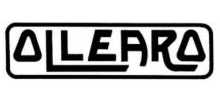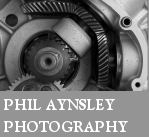


Ollearo fue una marca de motocicletas con sede en Turín que, si bien no tuvo una producción masiva, se caracterizó por la calidad y el diseño de avanzada de sus motos. Con excepción de los primeros modelos de dos tiempos, Ollearo será conocido por sus motores en monoblock con la caja de velocidades y transmisión cardánica.
En 1921 Neftali Ollearo abre un taller de reparaciones de motocicletas y a partir de 1926 se inicia como constructor con una bicicleta motorizada de 132 cm3 (también en el "Tipo Lady" para mujeres y eclesiásticos) y posteriormente una motocicleta de 175 cc. de dos tiempos. En 1930 construye un motor novedoso: un monocilindrico de cuatro tiempos OHV con cigüeñal longitudinal en lugar de transversal como era lo habitual, compacto, confiable a la vez que barato. Tenía transmisión cardánica que desde entonces Ollearo no abandonaría más, haciéndolo su propio elemento distintivo y siendo la primera moto italiana con esta tipo de transmisión, por lo que utilizará comercialmente el lema "La Primera de las Motos del Mañana".
Inicialmente este elegante motor se presenta con el modelo 175 "Tipo 4". Al año siguiente entra en producción la "Sirena" de 350 cc, y en 1932 el modelo "Perla" de 500 cc, todas con caja de cuatro velocidades y transmisión por cardan. En 1937 el Modelo 175 será llevado a 250 cc.e y en 1939 los 250 y 500 serán los modelos estándar adoptando la horquilla telescópica y una suspensión trasera oscilante con amortiguadores hidráulicos.
Ollearo producirá motofurgones y en 1933 la "motovetturette", una moto de tres ruedas con una carrocería automovilística tipo cabriolet sobre la base del Perla 500 cc.que tendrá corta vida pues en 1936 aparece el verdadero utilitario, el Fiat Topolino. En la postguerra Ollearo presentará un motor auxiliar para bicicleta de 45 cc con accionamiento por rodillo para finalmente cerrar sus puertas en 1952. En 1947 Roberto Ollearo, hijo del ingeniero-constructor, que desde 1937 había corrido con una Gilera 500 Otto Bulloni y después de la guerra con Guzzi 500 Condor y Dondolino construye un 250 de carrera. Para ello modifica el cigüeñal soportándolo con tres cojinetes en lugar de dos y adopta una distribución por árbol de levas a la cabeza con válvulas expuestas. El embrague es en baño de aceite y tiene treinta discos de acero mientras que el eje de transmisión ahora tiene un acople con manchón de caucho. El 250 R tenía una horquilla de paralelogramo, mientras que el brazo oscilante trasero en forma de "L" estaba soportado por un resorte alojado en el tubo de bastidor superior. Gracias al uso intensivo del aluminio el 250 R pesaba sólo 111 kg y con 21 HP a 6700 rpm alcanzaba los 145 Km/h.
Source: Sergio Scalerandi
A Brief History of the Marque
Manufactured by Ollearo - Fabbrica Italiana Motoveicoli e Autoveicoli 1922-1952
Founded by Neftali Ollearo as a repair workshop in 1921, the Turin company produced relatively small numbers of advanced design and high quality motorcycles. In the 1930s, Ollearo became known for their unit-construction engines with cardan transmission.
In 1926 the first machine was a 132cc Turismo model with a three-speed transmission, followed by a 125cc Sport. In 1927, the 132cc Comfort Lusso light motorcycle retained the general characteristics of the Turismo model with some cosmetic improvements and in 1929 a 175cc model was added. For the 1930 season the catalogue listed a 175 two-stroke with the cylinder tilted forward and a 175cc four-stroke ohv machine, and a 130.6 cc two-stroke Lady's model with the top tube of the frame curved slightly downward.
Displayed at the 1930 Turin Fair, the new 175cc four-stroke OHV single-cylinder "Tipo 4" had a longitudinal crankshaft instead of the usual transverse type; a machine which was compact, reliable and yet inexpensive. It had shaft drive which remained a distinctive feature of the Ollearo motorcycles and was the first (and until the post-war years the only) Italian machine with this type of transmission. The firm's advertising slogan was "The First of the Motorcycles of Tomorrow".
For 1931 a twin-port 350cc Sirena model was released and in early 1932 the 500cc Perla with four-speed gearbox made its debut. In 1933, a 250cc version of the Tipo 4 was added to the range; this differed little from the 175 save capacitiy and carburettor. All of these retained the cardan drive train.
Ollearo also built motofurgones and in 1933 the "Motovetturette" appeared, a three-wheeled motorcycle incorporating a cabriolet-type automobile body with chassis components, engine and drivetrain of the Perla. Production of these was curtailed in 1936 when they contracted to Fiat for the production of light trucks and vans based on the Fiat Topolino 500.
The 1939 range consisted of the 175 tipo 4, 175 tipo 2 Confort, 250 tipo 4, 350 tipo Sirena and the 500 tipo Perla. There were also motofurgoncini and motocarro in capacities of 175, 250, 350 and 500cc, along with number of industrial engines.
1946 saw the adoption of telescopic forks and swinging arm rear suspension for all models. That year the factory built a two-stroke auxiliary motor of 45cc producing 1.25 hp at 4500 rpm which could be applied to the front or rear wheel of a bicycle. Then in 1948 new models, the Type 4 in 175 and 250cc versions, were added. In the following years they continued the production of the basic models, the DC micromotor 45, the three-wheelers and vans, and a variety of motorcycles in displacements of 175, 250, 350 and 500cc.
1952 saw the end of motorcycle production, however the firm continued with quite sophisticated light trucks based on the Fiat.
Ollearo's son Roberto had been racing a Gilera 500 since 1937, and after the war with Moto Guzzi. In 1947, aided by his brother Silvio, he built a 250cc road-racer based on the 250cc Ollearo shaft-drive engine. The 250 R had a parallelogram fork and unconventional swinging arm rear suspension. Considerable attention was paid to weight reduction which resulted in a machine of only 111kg. It produced 21 HP at 6700 rpm and could achieve 145 km/h.
Roberto Ollearo became Italian sidecar champion in 1973-1974 on a Suzuki GT750 Ollearo.
Sources: MC Storico Conti, Henshaw, Sergio Scalerandi, ollearo.com, period literature, et al.
ollearo.com is dedicated "to my father Silvio and my uncle Roberto."